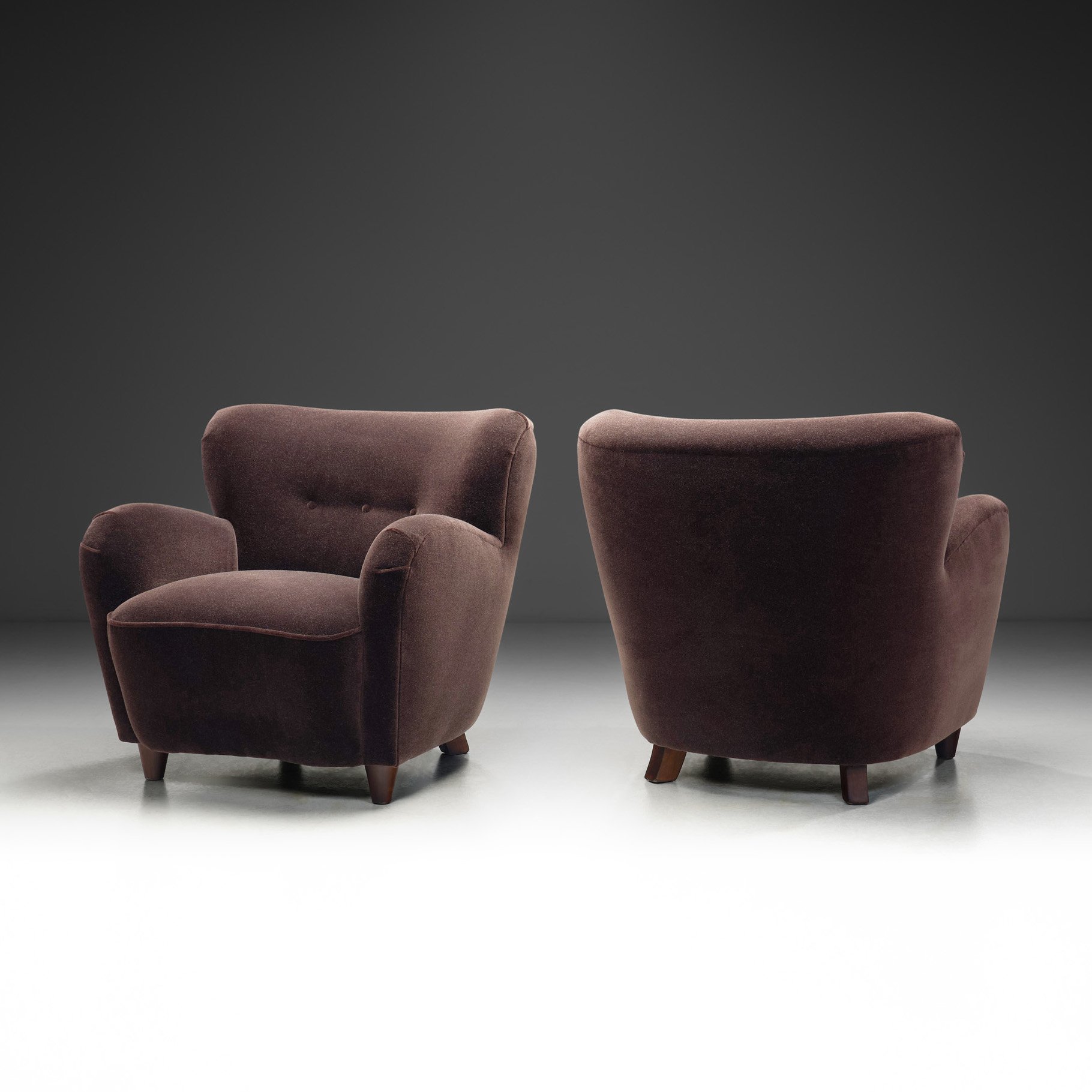Joaquim Tenreiro “Curva” Chairs, Brazil 1960s (sold)



















Joaquim Tenreiro “Curva” Chairs, Brazil 1960s (sold)
Joaquim Tenreiro was a sculptor, painter, engraver and designer, born into a family of joiners. By the late 1940s, the modern movement had taken hold in Brazil, and Tenreiro’s pieces with a more modern sensibility became increasingly popular.
These chairs were conceived according to Tenreiro’s principle that Brazilian furniture should be light, in his words, “lightness, has nothing to do with the weight itself, but with grace and functionality”. Testimony to the ideological alignment of Brazilian modern furniture, Tenreiro's design is rooted in the principle of stripping back the unnecessary to demonstrate the true beauty of an object whilst maintaining the upmost function. “Curva”, meaning ‘curve’ in Portuguese, inspired the model’s name, and is based on the defining curve of the backrest. Tenreiro’s deep knowledge of wood is illustrated through the poetic features in his lines. In these chairs’ seats, the designer explored the weaving of cane, which evokes indigenous braiding and basketry. The use of wood and natural fibres is generally associated with the need to adapt furniture to a tropical climate, however the aesthetic became popular in the mid-century all over Europe as well. These chairs are authentic organic compositions and present straight lines and geometric elements, creating a structure that is simple, but exquisite.
As one of Tenreiro's most collectible and sought-after designs, this pair of chairs showcases the beauty of combining natural materials with expert Brazilian design and craftsmanship.
SOLD
Condition:
In good vintage condition. Wear consistent with age and use. Small scratches and marks on the wood.
Dimensions:
20.48 in W x 19.69 in D x 31.89 in H; Seat height 15.94 in
52 cm W x 50 cm D x 81 cm H; Seat height 40.5 cm
Literature:
Tenreiro, Soraia Cals, Bolsa de Arte do Rio de Janeiro, Brazil 1998, p. 127 and 212 (ill.)
Móvel moderno no Brasil, Maria Cecilia Loschiavo dos Santos, Olhares, 2015, p. 87 and 121.
Móvel moderno Brasileiro, Marcelo Vasconcellos, Aeroplano, P. 92
Brazil Modern, Aric Chen, Monacelli Press, New York 2016, p. 76 and 77
Desenho da Utopia, Brazilian Modern Furnitures, Éditions Olhares, São Paulo 2016, p 115
About the designer:
Joaquim Tenreiro (Melo Guarda, Portugal 1906 - Itapira São Paulo 1992) was a sculptor, painter, engraver and designer. Born into a family of joiners, at the age of two his family emigrated to Brazil, settling in Niterói, Rio de Janeiro.
In 1914, he returned to Portugal, he helped his father with woodwork projects and began painting classes. He returned to live in Brazil between 1925 and 1927. In 1928, he moved to Rio de Janeiro permanently. He studied drawing at the Portuguese Literary Lyceum and enrolled in a course at the Liceu de Artes e Ofícios. In 1931, he joined the Bernardelli Nucleus, a group created in opposition to the academic teaching of the National School of Fine Arts – Enba.
After some years of dabbling in as a painter Joaquim traversed his talents and went back to wood. He began to design for Laubish & Hirth, Leandro Martins and Francisco Gomes, specializing in French, Italian and Portuguese furniture. A decade later he founded, the company Langenbach & Tenreiro, which would become renowned for its modern furniture designs. Tenreiro's partner insisted on selling traditional furniture, while Tenreiro argued for a modern sensibility, in the early years Tenreiro designed both conservative and modern furniture for their inventory. However, by the late 1940s, the modern movement had taken hold in Brazil, and when only Tenreiro's original pieces sold, the shop dedicated itself solely to contemporary designs.
His success as a designer commenced in 1942 when he was commissioned to design and manufacture the furniture for the residence of Francisco Inácio Peixoto, in Cataguases, in the interior of Minas Gerais. At the end of the 1960s, for personal and also market reasons, he closed his stores and stopped manufacturing furniture. Instead, he returned to the realms of painting and dedicated himself to sculpture. Techniques discovered during his design days can be seen in his sculptures
Tenreiro's creations are renowned for their combination of modern characteristics that went on to define mid-century Brazilian furniture such as simplicity, the use of local materials, function and artistic beauty. ~H.












